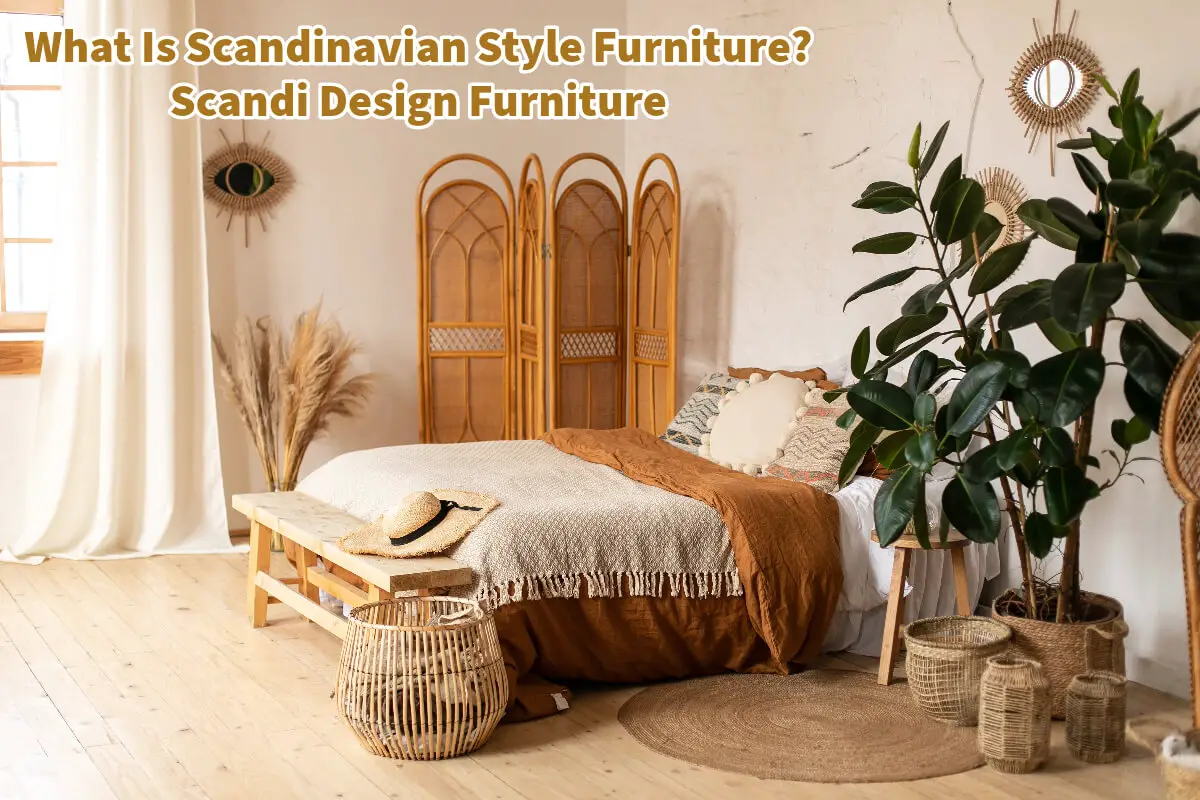Scandinavian design, commonly called Scandi style, maintains its enduring appeal and popularity. This is a design aesthetic I’ve been enamored with ever since I lived and studied in Sweden.
Balancing minimalism with functionality, Scandinavian or Scandi design often draws inspiration from natural elements. If you aim to elevate your living space into a sanctuary of understated sophistication, Scandinavian design provides a compelling avenue to explore.
Table of Contents
- The Essence Of Scandinavian Style Furniture: Where Simplicity Meets Functionality
- Frequently Asked Questions
- Related Content
The Essence Of Scandinavian Style Furniture: Where Simplicity Meets Functionality
Scandinavian design is the epitome of simplicity, yet it captivates with its functional beauty. Its style harmonizes minimalist features with cozy elements deeply influenced by nature.
Scandinavian design offers an enriching path for those looking to transform their living space into a haven of practical elegance.
Read on as we dissect the key elements that make Scandinavian design unique and how to imbibe its essence into your home.
The Core Of Scandinavian Design: Minimalism
While Scandinavian design incorporates shades of minimalism, modernism, and contemporary decor, it’s chiefly minimal. The emphasis is on functional simplicity—each piece serves a purpose and does so without excess.

Furniture lines are clean, and the overall aesthetic leans toward uncluttered spaces, making it ideal for those seeking utility and beauty.
The Stalwarts Of Scandinavian Design
The movement originated in the 1930s through the creative minds of designers like Josef Frank, Alvar Aalto, and Arne Jacobsen. Josef Frank introduced bright colors and bold patterns, a departure from traditional minimalism.
Alvar Aalto was famous for his organic forms and bentwood furniture, while Arne Jacobsen is best known for iconic pieces like the “Egg Chair.”
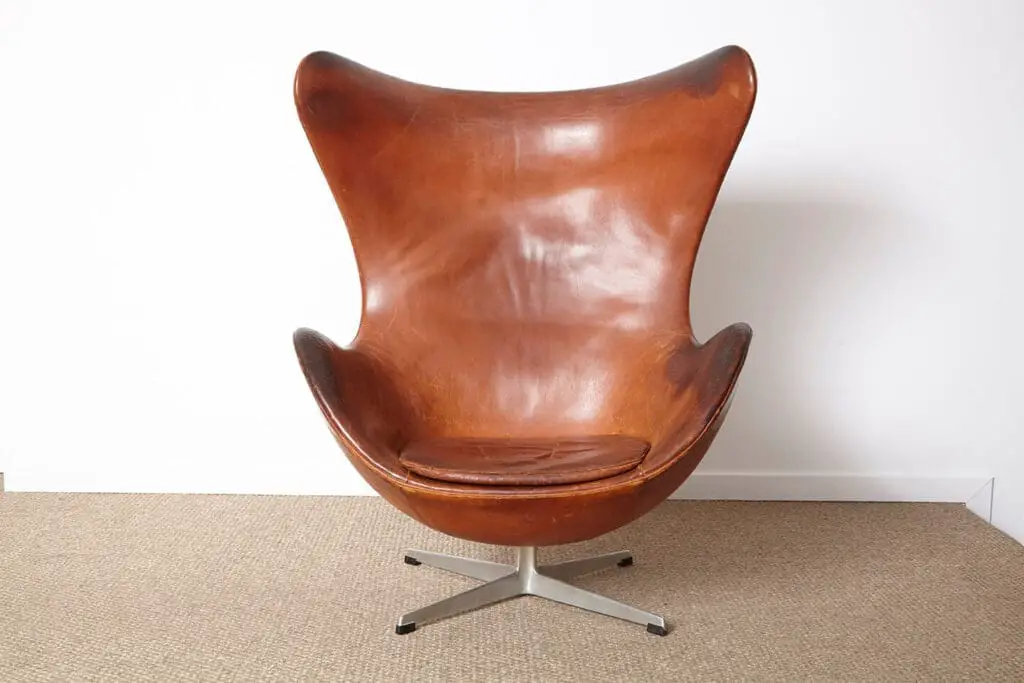
These designers set the tone for Scandinavian design, each contributing unique elements that have been incorporated into the style’s evolution.
The 1950s: The Global Rise
By the mid-1950s, Scandinavian design was garnering international acclaim. A pivotal moment came with a design show that toured the U.S. and Canada from 1954 to 1957. The exhibition displayed works by Nordic designers that captivated audiences with their simple designs deeply rooted in the nature and climate of Scandinavia.
Functionality In Everyday Life
Central to Scandinavian design is the principle of enhancing daily life. Lighting becomes crucial, with Nordic regions experiencing as little as seven hours of daylight during winter.
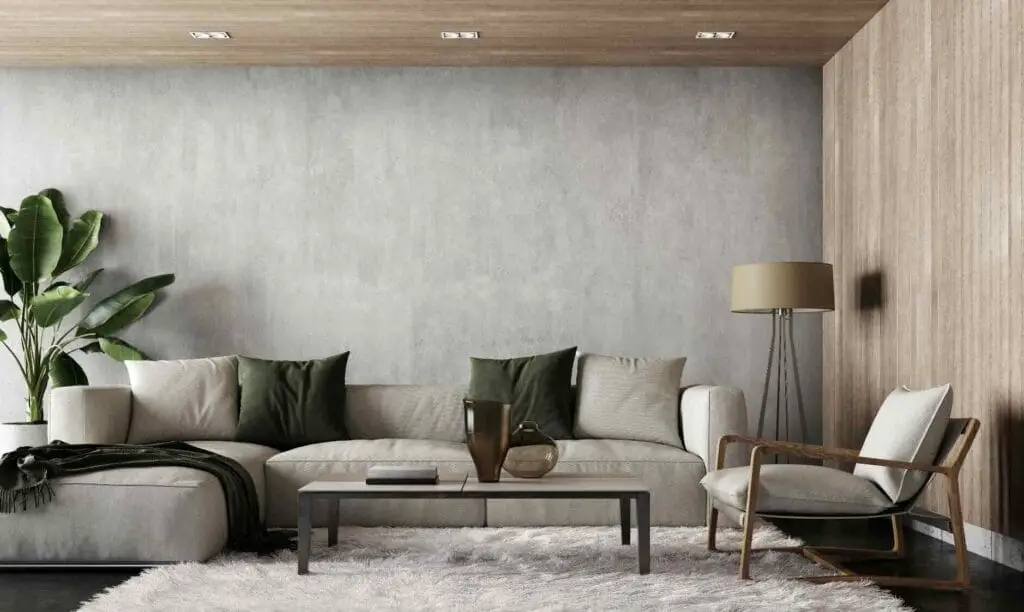
Forget about wall-to-wall carpeting; here, it’s all about natural hardwood floors or whitewashed flooring designed to reflect any available light. Furniture often serves dual purposes, offering storage solutions, and window treatments are either non-existent or highly sheer to maximize natural light.
Adding Texture: A Sense Of Warmth
Contrary to the often cold perception of minimalism, Scandinavian design infuses warmth through the careful use of textiles.
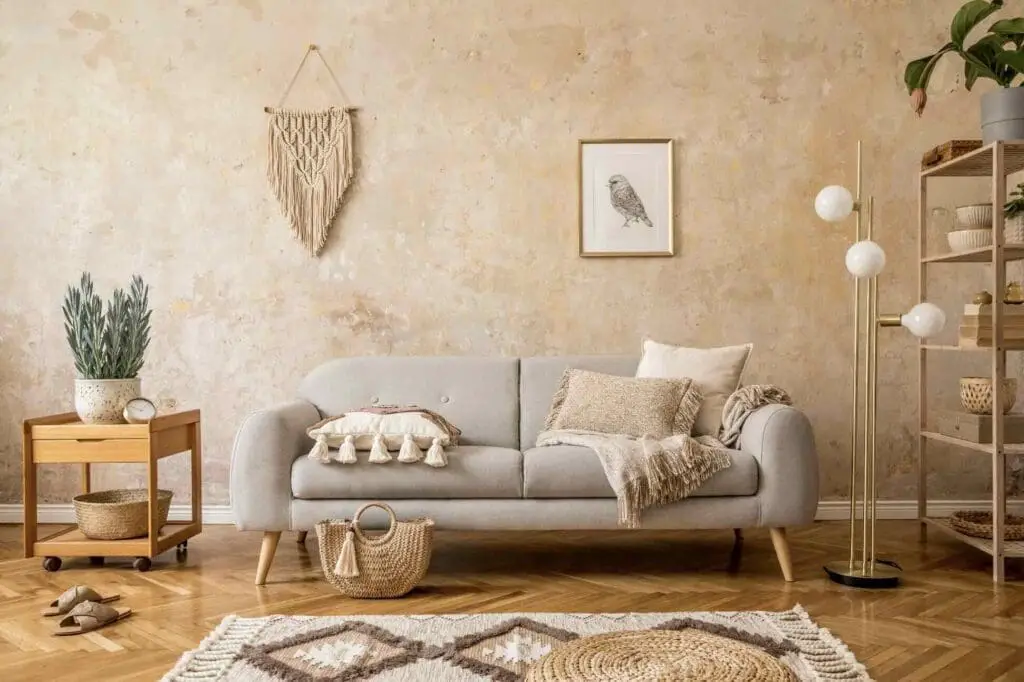
Think of plush sheepskins, luxurious wool, and soft mohair; these are more than mere decorative elements—they serve a practical purpose in colder climates. Thus, while maintaining a minimalist look, these textures add comfort and visual intrigue.
The Neutral Palette: An Ode To Nature
In Scandinavian interiors, neutral colors rule the roost. Given the scarcity of natural light, neutral shades like white, grey, and beige are predominant.
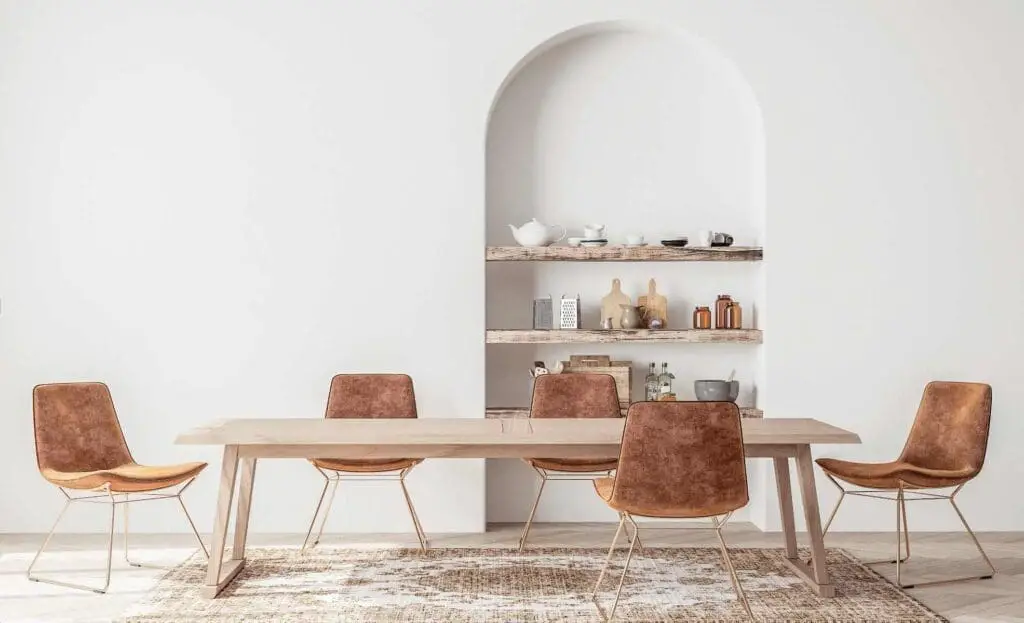
However, accent colors do find their way in, usually mirroring the earthy tones of nature—think dark blues, greens, grays, and browns. These muted, nature-inspired colors create a space that feels like a cozy cocoon.
The Hygge Factor
While Hygge became a buzzword in 2016, it’s crucial to note that it’s not a design style but a Danish philosophy centered around coziness and contentment.
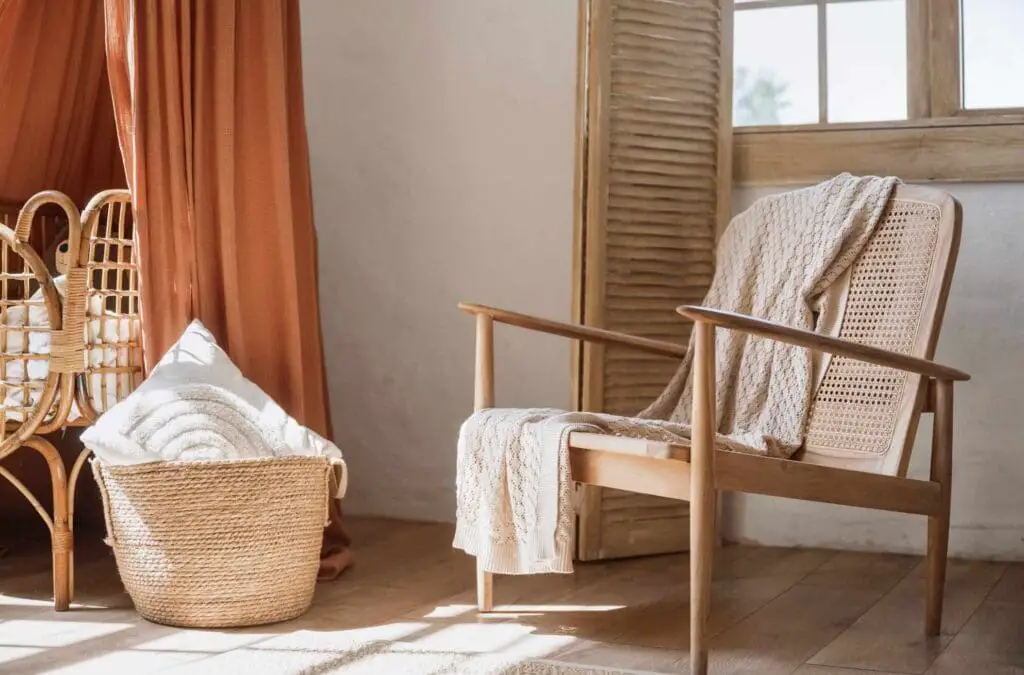
However, Hygge’s principles often align with Scandinavian design—both aim for a warm, inviting environment.
The Swedish Concept Of Balance: Lagom
Sweden’s contribution to this design philosophy is summed up in the word ‘Lagom,’ meaning ‘just the right amount.’ It’s all about striking a balance between minimalism and comfort.
You might find a modern, sleek sofa adorned with a vintage linen cushion or a minimalist dining table set against a layered, textured rug backdrop. This look of “Lagom” is a look I have always appreciated in the many Swedish homes I went into that had great design and tastes.
Scandinavian design is more than a trend; it’s a lifestyle choice. Its enduring appeal lies in its simplicity, functionality, and the serenity it brings into our often chaotic lives. Whether you’re a minimalist at heart or someone who loves a cozy space filled with texture,
it is a great look, and almost anyone can incorporate some of the look into their design trends. That is because the Scandinavian style offers the best of both worlds.
From its origins in the early 20th century to its current global admiration, it inspires and enriches our homes and lives. Scandinavian design could be your ultimate guide to bringing timeless elegance and functional comfort into your living space.
If you’re interested in producing Scandi furniture for export and manufacturing, we at Mondoro would be delighted to discuss how we can assist you.
Find out more about how Mondoro can help you create, develop, and manufacture excellent home decor and furniture products – don’t hesitate to contact me, Anita. Check out my email by clicking here or become a part of our community and join our newsletter by clicking here.
Mondoro gives out a FREE Lookbook to anyone interested. You can receive a copy of our latest Lookbook by clicking here.
Listen to our Podcast called Global Trade Gal. You can find it on all major podcast platforms. Try out listening to one of our podcasts by clicking here.
Subscribe to our Mondoro Company Limited YouTube Channel with great videos and information by clicking here.
Frequently Asked Questions
What is Scandinavian Style Furniture?
Scandinavian style furniture, commonly known as Scandi design, is a design aesthetic originating from the Nordic countries like Sweden, Denmark, Norway, Finland, and Iceland. It is characterized by a harmonious blend of minimalism, functionality, and a connection to nature.
What are the key characteristics of Scandinavian Style Furniture?
Scandinavian style furniture is characterized by clean lines, simplicity, and functionality. It often features light colors, natural materials such as wood, and a focus on creating a sense of warmth and coziness in the living space.
How does Scandinavian Design balance minimalism and functionality?
Scandinavian design embraces minimalism by eliminating unnecessary ornamentation while prioritizing functionality. Furniture is designed to be practical, comfortable, and aesthetically pleasing without excessive embellishments.
What materials are commonly used in Scandinavian Style Furniture?
Natural materials play a significant role in Scandinavian design. Wood, particularly light-colored woods like pine and birch, is a staple. Other materials include leather, wool, and natural fabrics that contribute to the warm and inviting atmosphere.
Are Scandinavian Style Furniture pieces versatile in terms of interior decor?
Yes, one of the strengths of Scandinavian style furniture is its versatility. The clean lines and neutral colors make it easy to integrate into various interior design styles, whether it’s a modern, traditional, or eclectic setting.
How does Scandinavian design draw inspiration from natural elements?
Scandinavian design often incorporates nature-inspired elements such as organic shapes, natural textures, and a color palette inspired by the Nordic landscapes. This connection to nature creates a calming and serene atmosphere in the living space.
Is Scandinavian Style Furniture suitable for small living spaces?
Absolutely. Scandinavian design’s emphasis on simplicity and functionality makes it ideal for smaller living spaces. Compact furniture pieces with multifunctional features are common in Scandi design, maximizing space without sacrificing style.
What are some iconic pieces of Scandinavian Style Furniture?
Iconic Scandinavian furniture includes designs by renowned designers like Arne Jacobsen, Hans Wegner, and Alvar Aalto. Examples include the Egg Chair, Wishbone Chair, and Aalto’s bentwood furniture, which have become synonymous with Scandinavian design.
Can I achieve a cozy atmosphere with Scandinavian Style Furniture?
Yes, creating a cozy atmosphere is a key aspect of Scandinavian design. The use of warm materials, soft textures, and strategic lighting helps to achieve a welcoming and comfortable environment.
Is Scandinavian Style Furniture suitable for all budgets?
While some designer pieces can be high-end, there are also affordable options available. Scandinavian design has influenced a wide range of furniture, making it accessible to various budgets. Look for well-crafted, quality pieces that capture the essence of Scandi style without breaking the bank.
Related Content
Nordic Vs. Scandinavian Design Is There A Difference?
In interior design, “Nordic” and “Scandinavian” are often used interchangeably. These design styles have gained immense popularity recently for their clean lines, functional approach, and timeless aesthetics.
You can learn more by reading our blog, Nordic Vs. Scandinavian Design Is There A Difference? by clicking here.
Scandinavian Design And The United States 1890 – 1980 Impact
I recently attended an exhibition at the Milwaukee Art Museum entitled Scandinavian Design and The United States 1890 – 1980. This exhibition was co-organized by the Milwaukee Art Museum, The Los Angeles County Museum of Art, Nationalmuseum Sweden, and Nasjonalmuseet Norway.
To learn more, you can read Scandinavian Design And The United States 1890 – 1980 Impact by clicking here.
Wabi-Sabi: Embracing Imperfection And Transience In Design
In an era where everything is mass-produced to perfection, where symmetry is celebrated, and where glossy, flawless finishes are the norm, the ancient Japanese design philosophy of Wabi-Sabi offers a breath of fresh air. Instead of striving for perfection, Wabi-Sabi celebrates imperfection and sees beauty in the simple, rustic, and imperfect life and design choices.
You can discover more by reading Wabi-Sabi: Embracing Imperfection And Transience In Design by clicking here.

